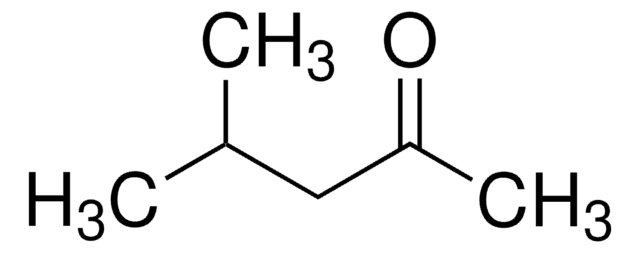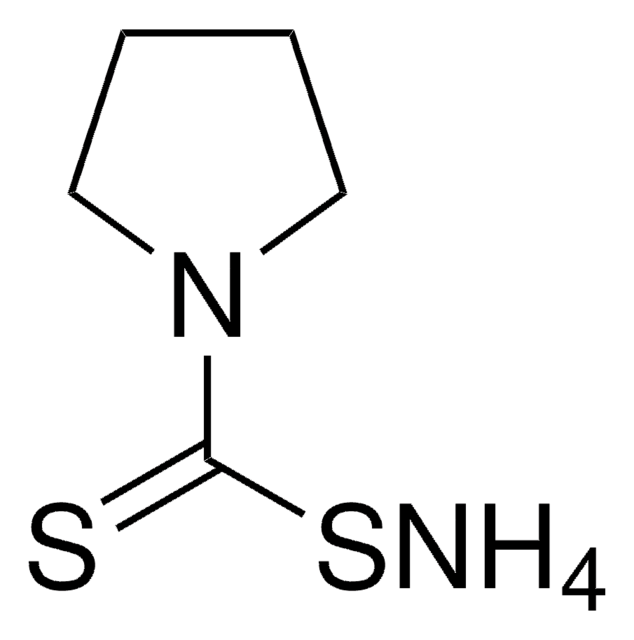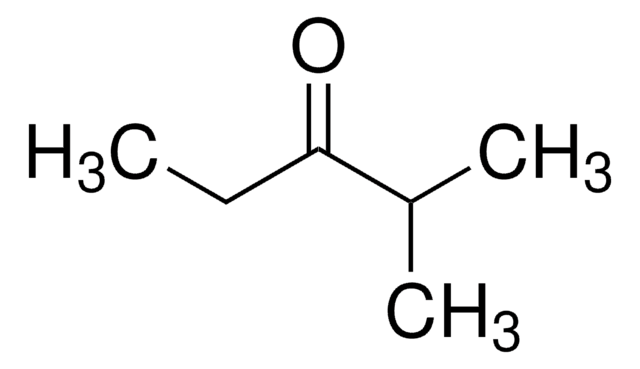360511
4-Methyl-2-pentanone
ACS reagent, ≥98.5%
Synonym(s):
Isobutyl methyl ketone, Isopropylacetone, MIBK, Methyl isobutyl ketone
About This Item
Recommended Products
grade
ACS reagent
Quality Level
vapor density
3.5 (vs air)
vapor pressure
15.7 mmHg ( 20 °C)
Assay
≥98.5%
form
liquid
autoignition temp.
840 °F
expl. lim.
1.2-8 %, 93 °F
impurities
≤0.002 meq/g Titr. acid
≤0.100% water
evapn. residue
≤0.0050%
color
APHA: ≤15
clear
refractive index
n20/D 1.395 (lit.)
bp
117-118 °C
mp
−80 °C (lit.)
density
0.801 g/mL at 25 °C (lit.)
SMILES string
CC(C)CC(C)=O
InChI
1S/C6H12O/c1-5(2)4-6(3)7/h5H,4H2,1-3H3
InChI key
NTIZESTWPVYFNL-UHFFFAOYSA-N
Looking for similar products? Visit Product Comparison Guide
General description
Application
- To prepare (R)-(-)-4-methyl-2-pentanol via asymmetric hydrogenation in the presence of silica-supported starch-polysulfosiloxane-platinum complex (SiO2-ST-Si-S-Pt).
- In the preparation of jet-fuel-range alkene [C10 and C11 branched alkanes] via aldol condensation reaction with furfural followed by hydrodeoxygenation reaction.
- Extracting agent for silver, gold and other rare elements from cyanide solutions.
Features and Benefits
- Low density
- Viscosity.
Signal Word
Danger
Hazard Statements
Precautionary Statements
Hazard Classifications
Acute Tox. 4 Inhalation - Carc. 2 Inhalation - Eye Irrit. 2 - Flam. Liq. 2 - STOT SE 3
Target Organs
Central nervous system
Supplementary Hazards
Storage Class Code
3 - Flammable liquids
WGK
WGK 1
Flash Point(F)
57.2 °F - closed cup
Flash Point(C)
14 °C - closed cup
Choose from one of the most recent versions:
Already Own This Product?
Find documentation for the products that you have recently purchased in the Document Library.
Customers Also Viewed
Our team of scientists has experience in all areas of research including Life Science, Material Science, Chemical Synthesis, Chromatography, Analytical and many others.
Contact Technical Service






